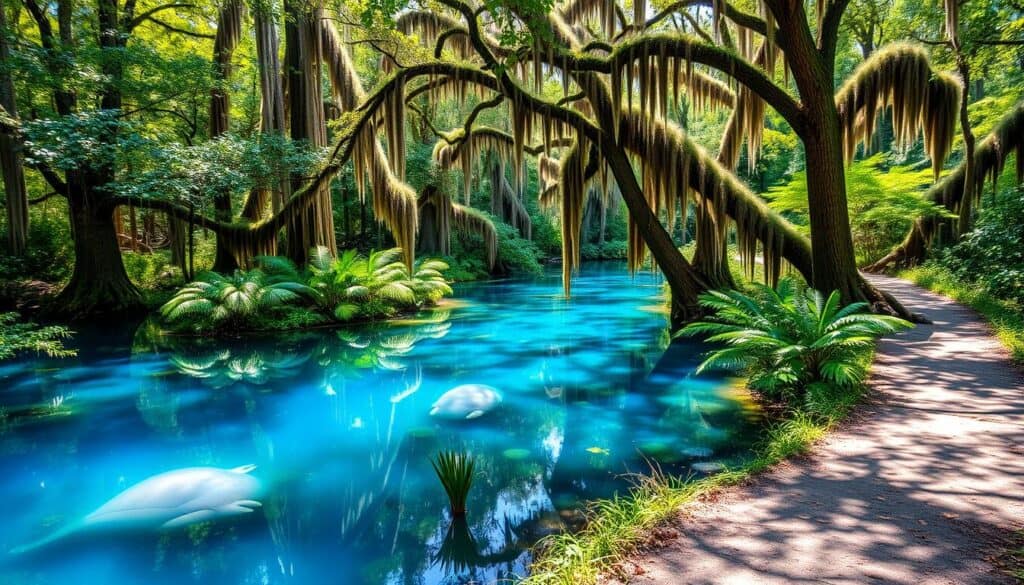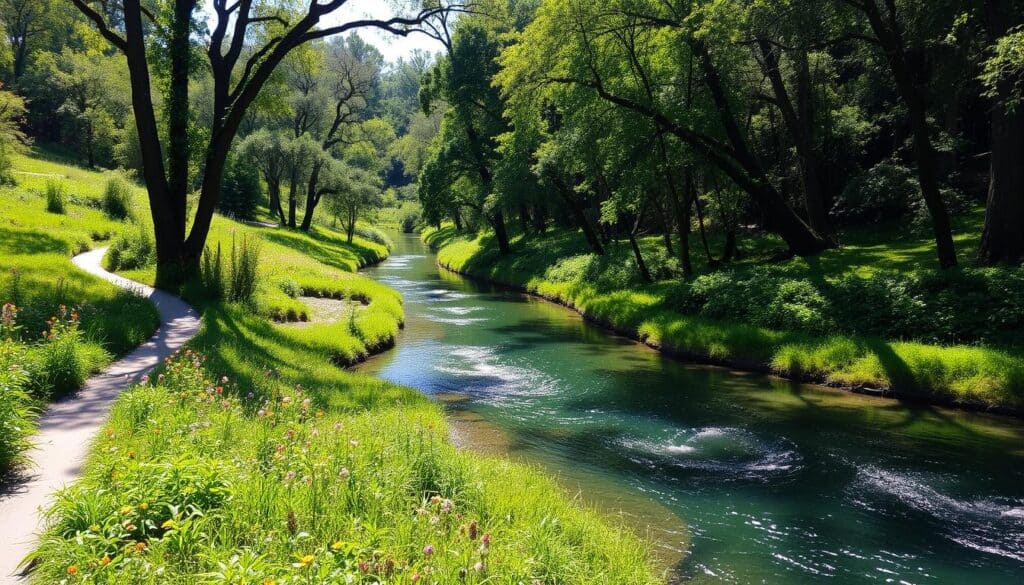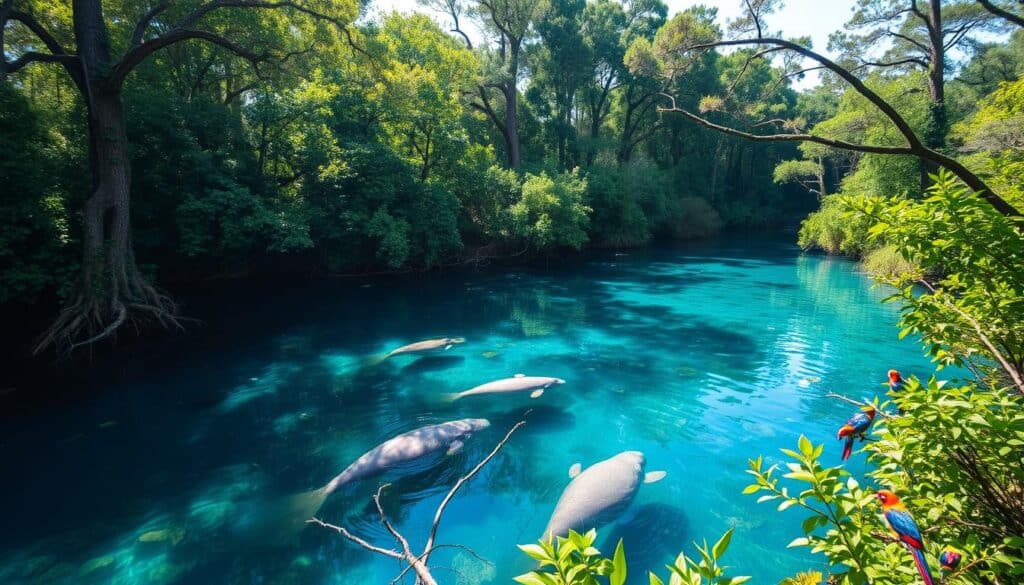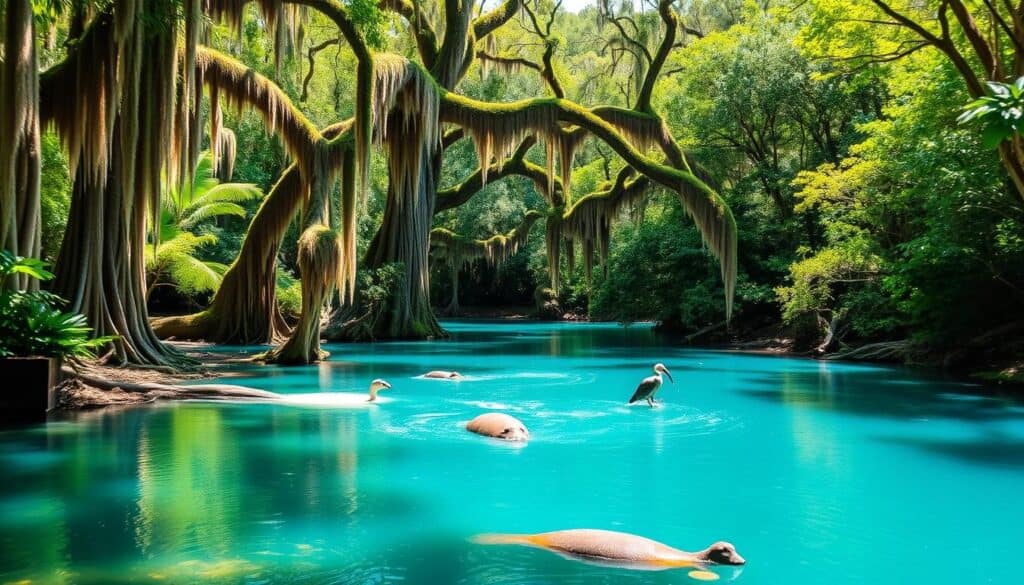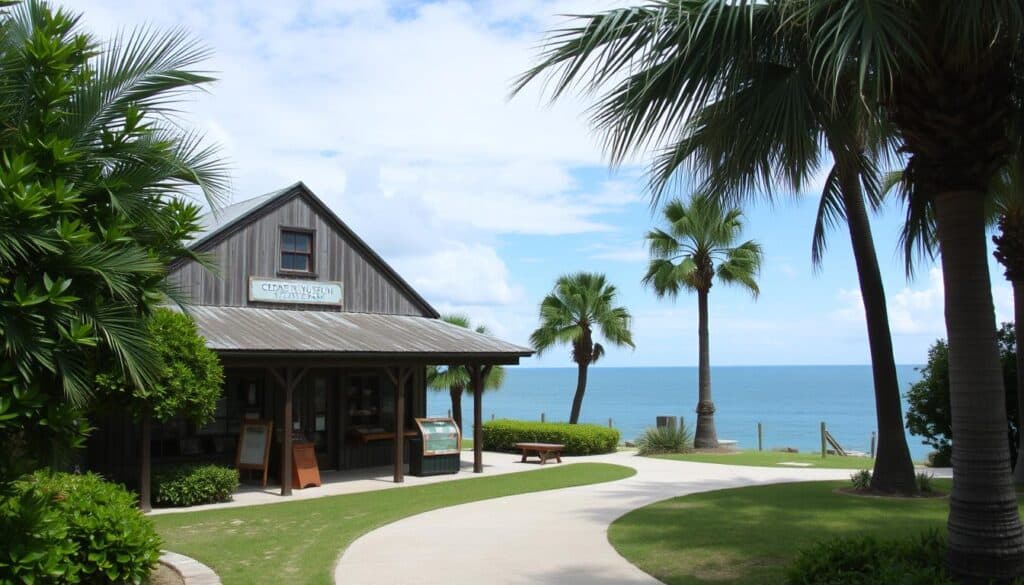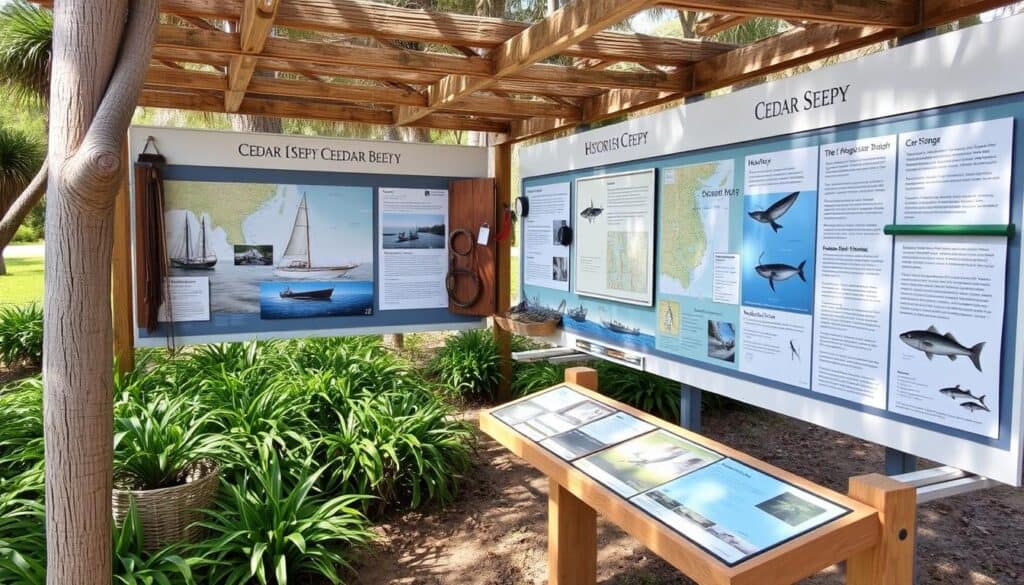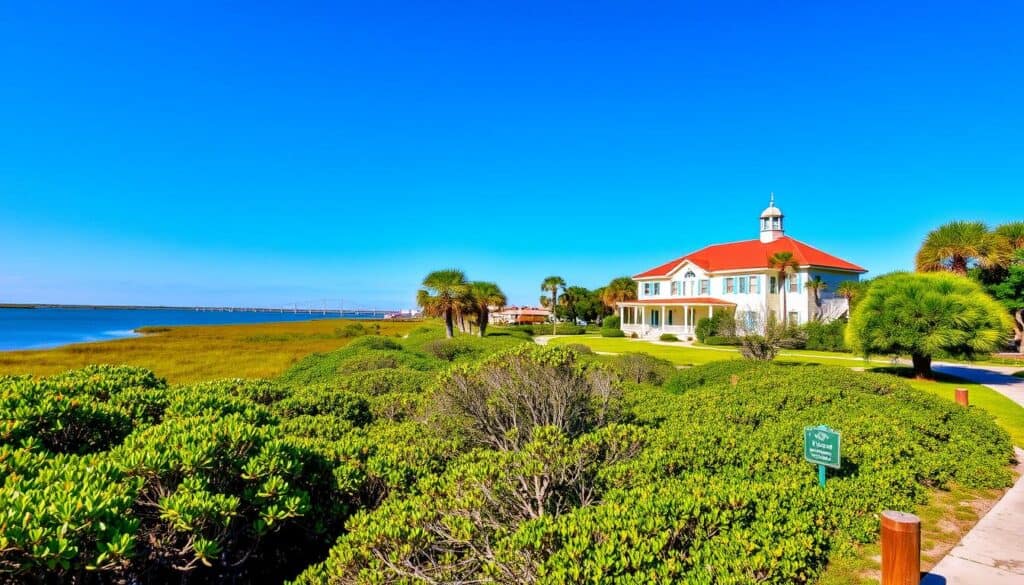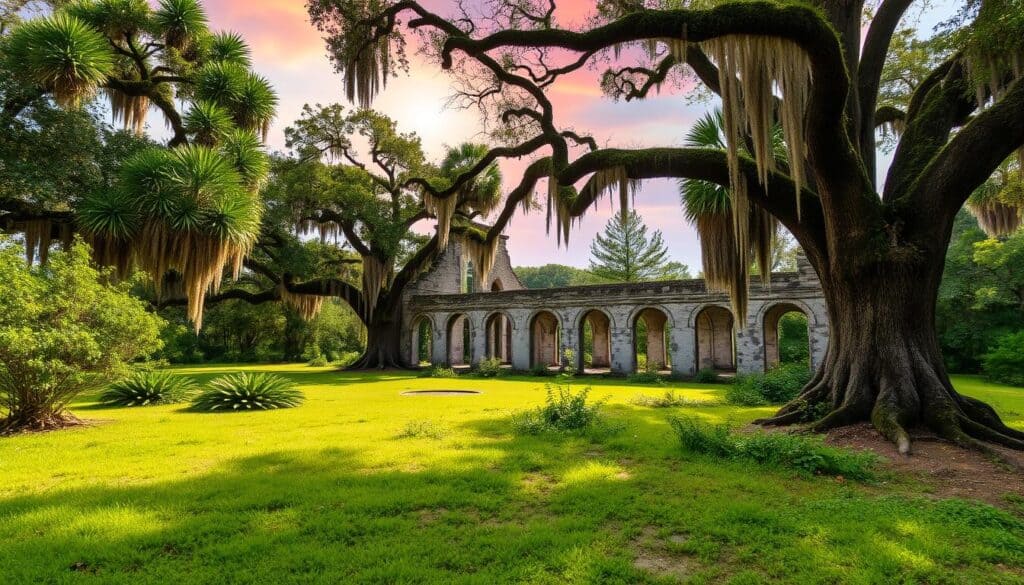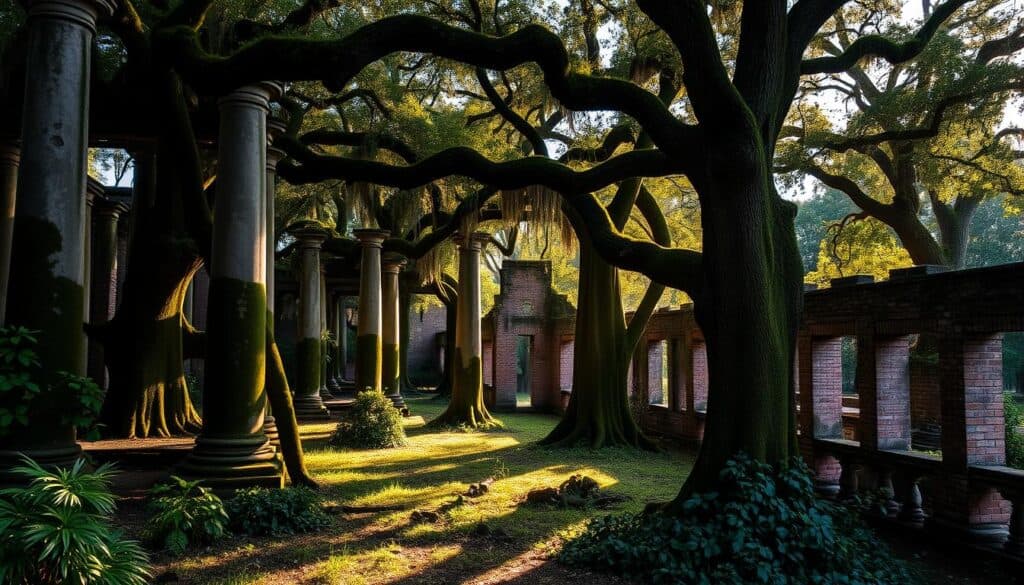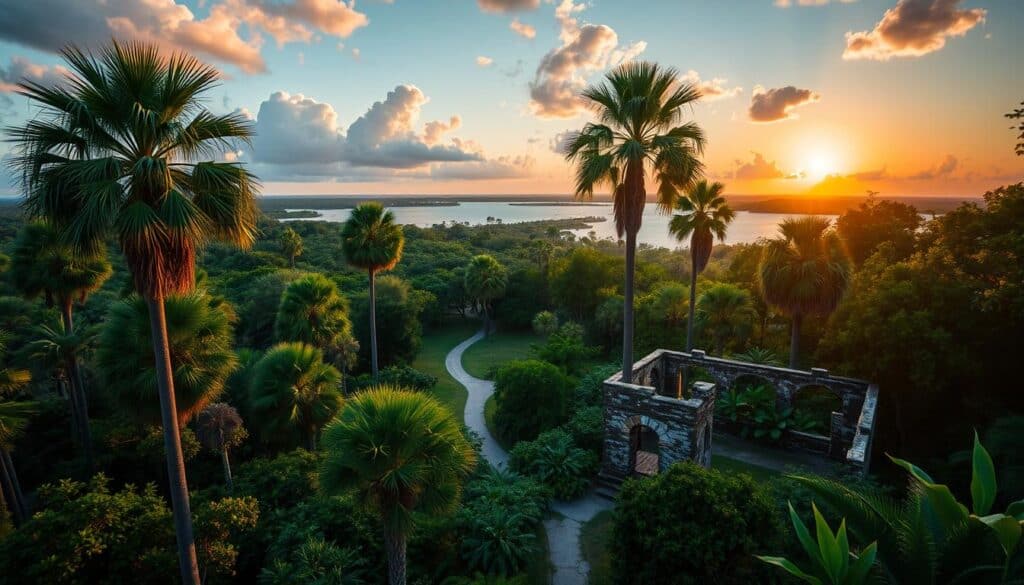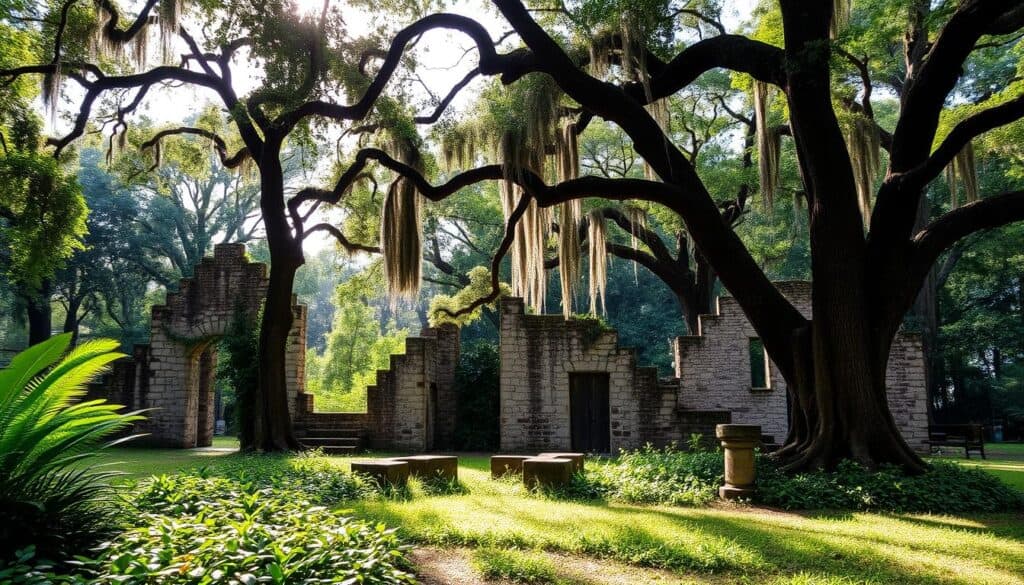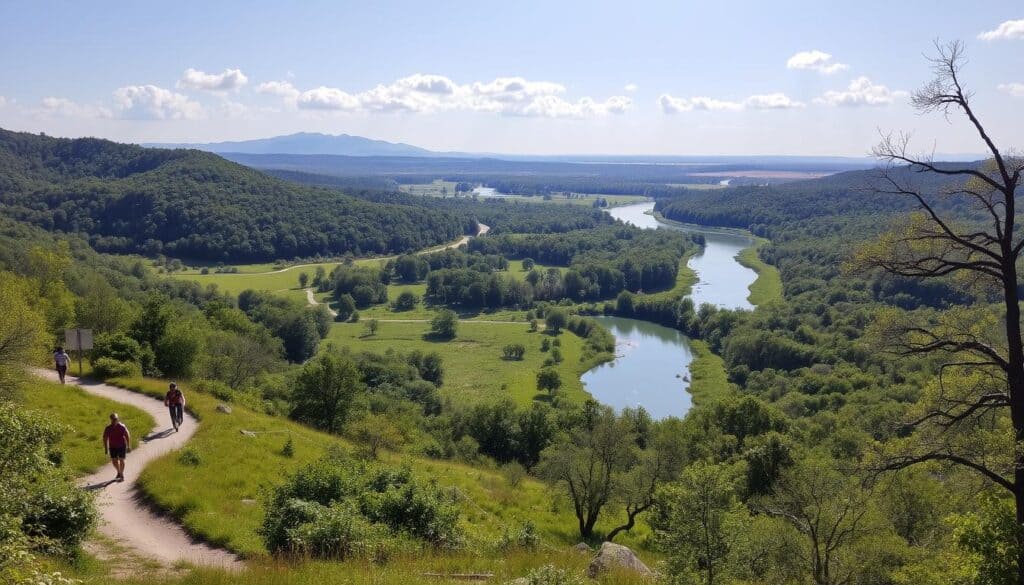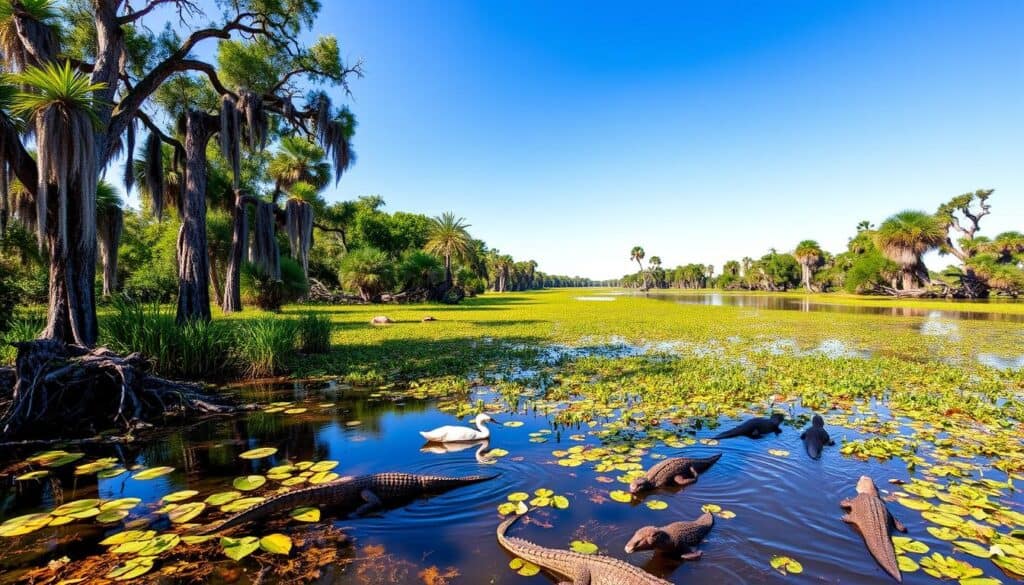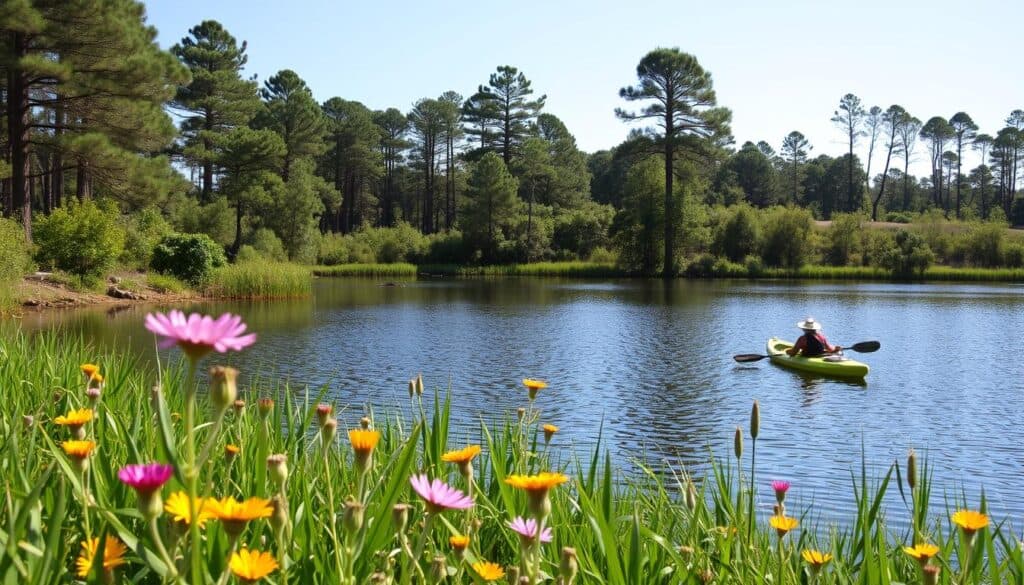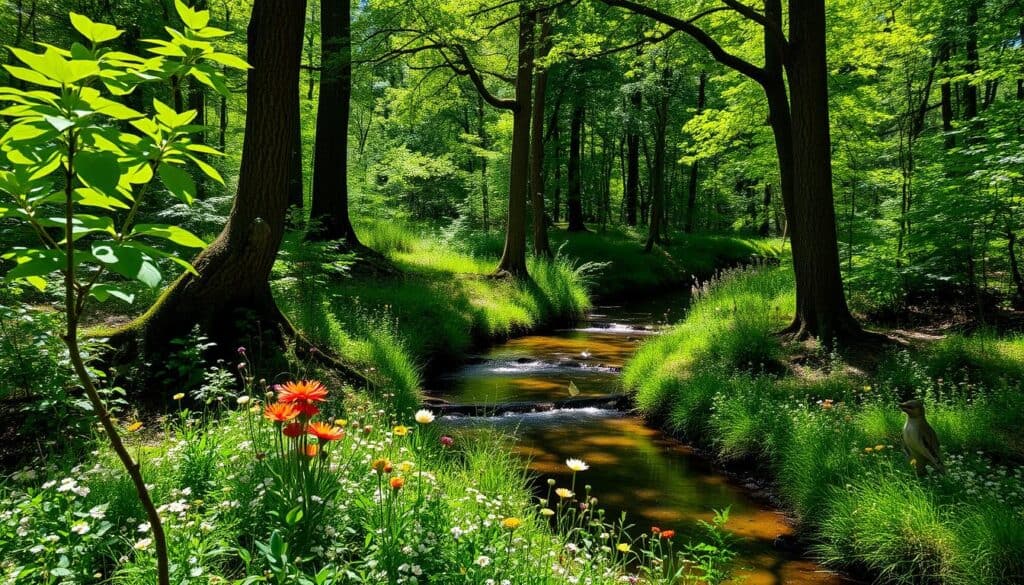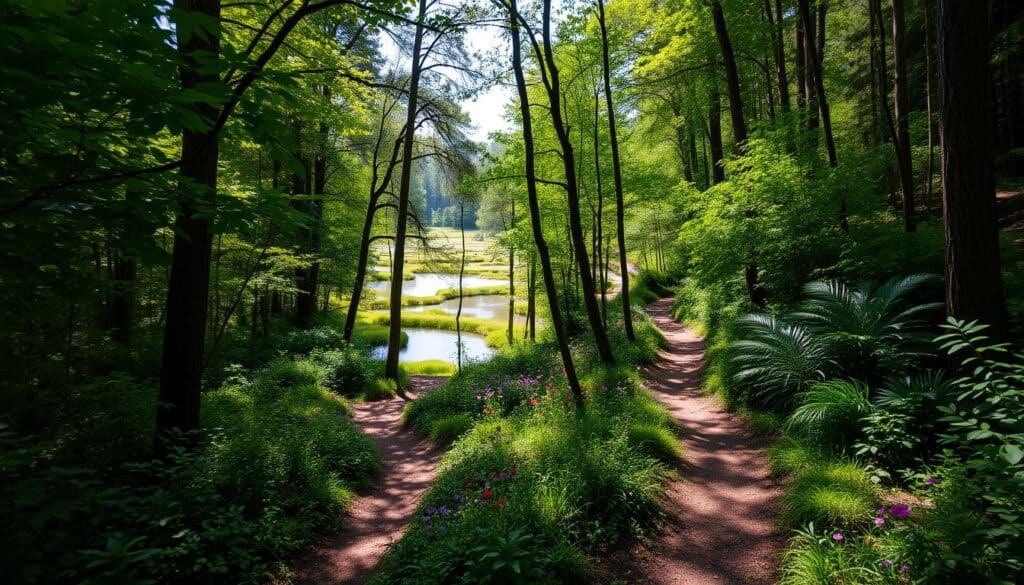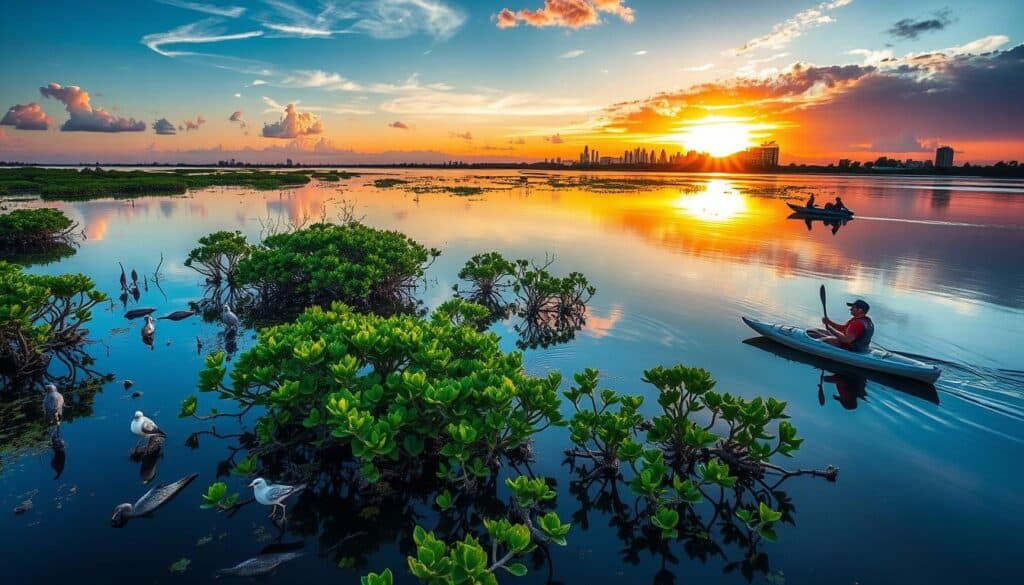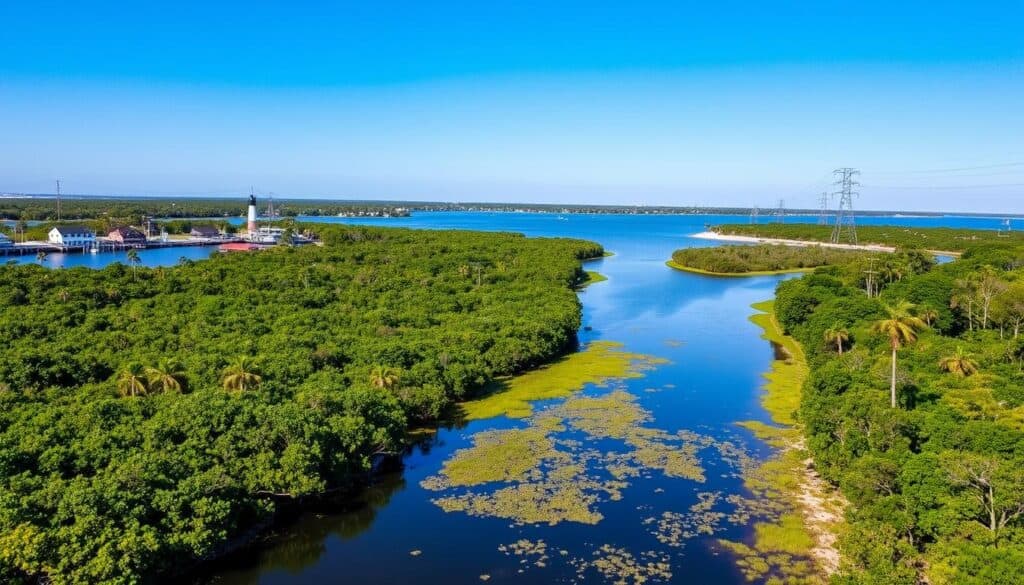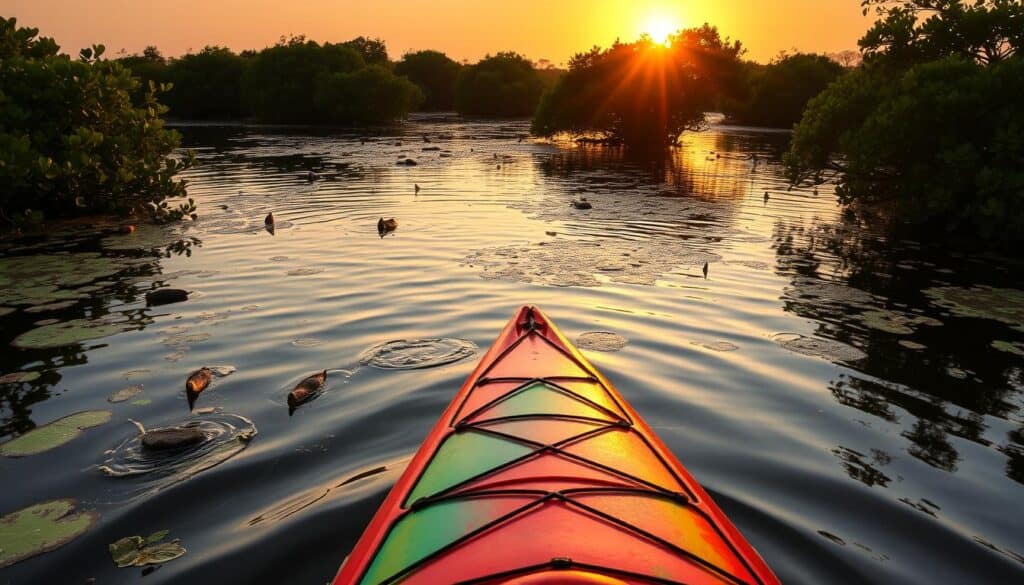Camp Helen State Park is a hidden gem located in the panhandle of Florida, offering a peaceful retreat away from the hustle and bustle of nearby tourist hotspots. This 183-acre park is nestled between Panama City Beach and Destin, providing a serene escape from the crowds. With its rich history, breathtaking Gulf views, and diverse wildlife, Camp Helen State Park is the perfect destination for nature lovers and adventure seekers looking for outdoor recreation in Florida state parks.
As one of the many Florida state parks, Camp Helen State Park stands out for its unique features and activities, making it an ideal spot for outdoor recreation. The park features over a mile of unspoiled shoreline along the Gulf of Mexico, providing ample opportunities for fishing, boating, and other water activities. Visitors can engage in outdoor activities like hiking, swimming, and kayaking, or simply enjoy the scenic views of the Gulf of Mexico.
Camp Helen State Park is home to diverse wildlife, including bird species such as ospreys, bald eagles, and great blue herons, among others. The park offers kayak, canoe, and paddleboard rentals from its concession stand, allowing visitors to explore the park’s waters and enjoy the beautiful scenery. With its natural beauty and outdoor recreation opportunities, Camp Helen State Park is a must-visit destination for anyone looking to experience the best of Florida state parks.
Key Takeaways
- Camp Helen State Park is a 183-acre park located in the panhandle of Florida.
- The park features over a mile of unspoiled shoreline along the Gulf of Mexico.
- Visitors can engage in outdoor activities like hiking, swimming, fishing, and kayaking.
- The park offers kayak, canoe, and paddleboard rentals from its concession stand.
- Camp Helen State Park is home to diverse wildlife, including bird species such as ospreys and bald eagles.
- The park provides a peaceful retreat away from the hustle and bustle of nearby tourist hotspots.
Introduction to Camp Helen State Park
Camp Helen State Park is a unique destination, offering a mix of natural beauty and rich history. Located on the western edge of Panama City Beach, the park is bordered by water on nearly all four sides, with the Gulf of Mexico to the south, salt marsh and freshwater wetlands to the west, and Lake Powell to the north and east. This diverse landscape creates a variety of coastal habitats that are home to a wide range of flora and fauna.
The park’s location makes it an ideal spot for outdoor enthusiasts, with hiking trails that wind through the coastal dune lakes and surrounding nature reserves. Visitors can explore the park’s many trails, including the nearly half-mile long nature trail that is designed to accommodate hikers, bikers, and those with special needs. The park is also a great spot for birdwatching, with many rare shorebirds and Bald Eagles calling the area home.
Some of the key features of the park include:
- 185 acres of parkland, purchased by Robert E. Hicks in 1928
- A historic lodge, constructed from 1931 to 1932 and renovated by the state since its purchase in 1994
- A water tower that stands 40 feet above the pump house and has a cistern tank capacity of 1,000 gallons
- A variety of outdoor activities, including swimming, nature study, hiking, and both freshwater and saltwater fishing
With its unique blend of natural beauty and rich history, Camp Helen State Park is a must-visit destination for anyone looking to explore the great outdoors. The park’s nature reserves and coastal habitats make it an ideal spot for nature lovers, while its hiking trails and outdoor activities make it a great destination for adventure seekers.
| Feature | Description |
|---|---|
| Park Size | 185 acres |
| Location | Western edge of Panama City Beach |
| Outdoor Activities | Swimming, nature study, hiking, fishing |
Natural Beauty and Scenic Views
Located on over 180 acres of land, Camp Helen State Park offers breathtaking coastal landscapes and diverse flora and fauna, making it an ideal destination for outdoor recreation and bird watching. The park’s unique location, surrounded by water on three sides, creates a rare and stunning environment that is perfect for camping grounds and exploring the great outdoors.
The park is home to a variety of plant and animal species, including ospreys, bald eagles, and great blue herons, as well as several species of turtles, such as loggerheads and green sea turtles. With its picturesque landscapes and diverse wildlife, Camp Helen State Park is a haven for nature lovers and photographers, offering endless opportunities for bird watching and outdoor recreation.
Some of the best spots for photography in the park include the coastal dunes, the lake shore, and the surrounding wetlands. These areas offer stunning views of the Gulf of Mexico and Lake Powell, and are home to a wide range of wildlife, making them perfect for bird watching and outdoor recreation. Whether you’re looking to relax and enjoy the scenery or get active and explore the great outdoors, Camp Helen State Park has something for everyone.
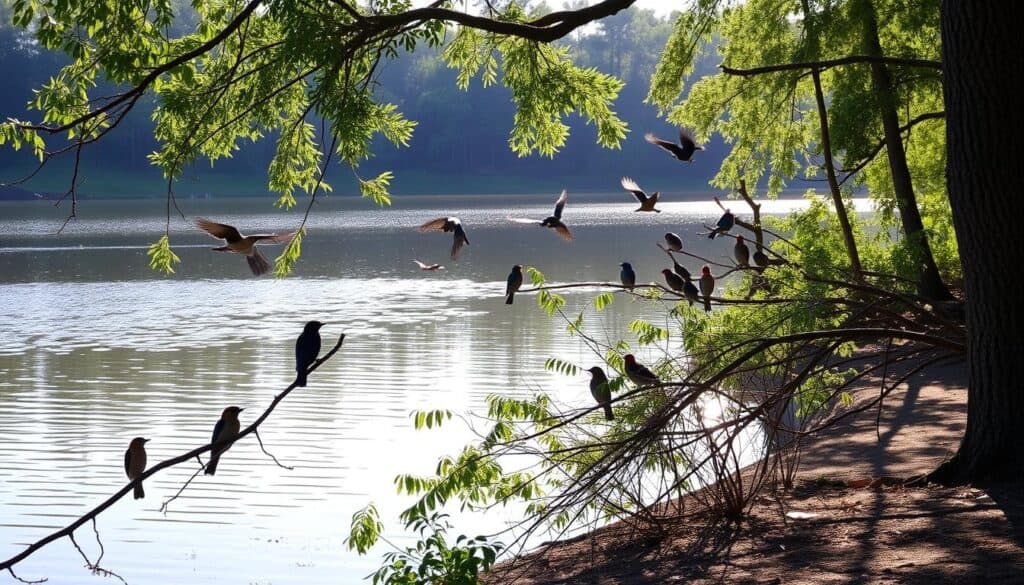
| Activity | Location | Best Time |
|---|---|---|
| Bird Watching | Coastal Dunes | Early Morning |
| Photography | Lake Shore | Late Afternoon |
| Hiking | Wetlands | Any Time |
Outdoor Activities to Enjoy
Camp Helen State Park offers a wide range of outdoor activities for visitors to enjoy, from hiking and kayaking to birdwatching and fishing. The park’s nature reserves provide a unique opportunity to explore the natural beauty of the area. With its abundant wildlife and scenic landscapes, the park is the perfect destination for outdoor enthusiasts looking to experience the best of hiking trails and outdoor recreation.
Some of the popular activities in the park include:
- Hiking: The park has several hiking trails that cater to all skill levels, from easy strolls to more challenging hikes.
- Kayaking: The park’s calm waters provide the perfect spot to explore the park’s coastline and enjoy outdoor recreation.
- Birdwatching: The park is home to a wide variety of bird species, making it a paradise for birdwatchers.
In addition to these activities, the park also offers fishing and boating on Lake Powell, making it a great destination for those who love water sports. The park’s nature reserves are also home to a wide variety of wildlife, including dolphins, sea turtles, and numerous species of fish.
Whether you’re looking to relax and unwind or get your adrenaline pumping, Camp Helen State Park has something for everyone. With its unique blend of natural beauty and outdoor activities, the park is the perfect destination for anyone looking to experience the best of outdoor recreation and nature reserves.
Family-Friendly Attractions
When it comes to family-friendly attractions, Camp Helen State Park has something for everyone. The park offers a range of educational programs and events, including guided hikes and birdwatching tours, which are perfect for outdoor recreation and learning about coastal habitats.
For families who love to spend time together in nature, the park’s camping grounds are an ideal destination. With scenic views and plenty of space to relax, the picnic areas and amenities are perfect for a family day out.
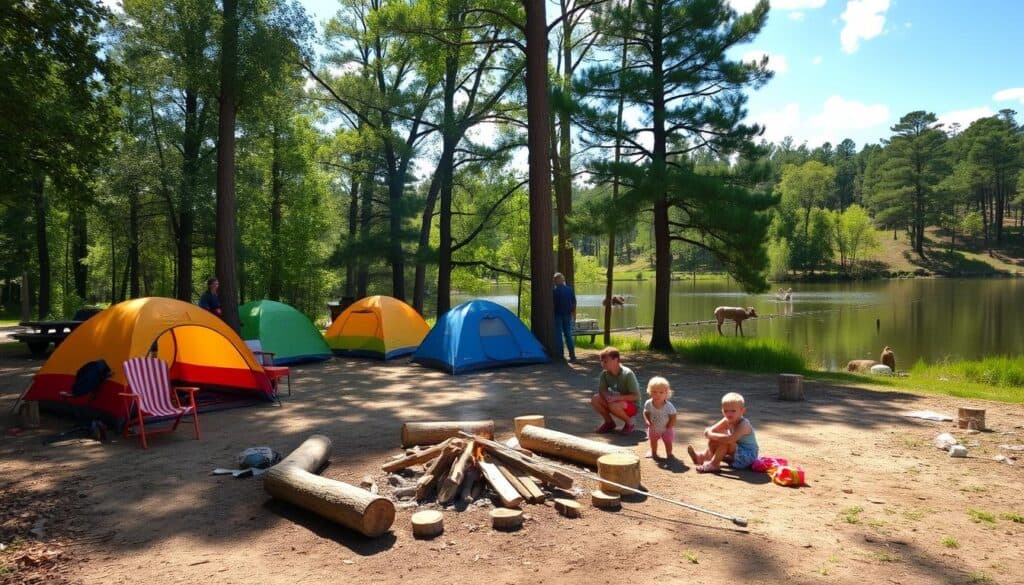
In addition to the park’s natural beauty, there are also plenty of fun games and activities to enjoy. From hiking trails to kayaking, there’s something for all ages and interests. Whether you’re looking for a relaxing day in nature or an action-packed adventure, Camp Helen State Park is the perfect spot for a family vacation.
Some of the other family-friendly attractions in the area include the Shell Island Shuttle, which offers nature watching, fishing, and beachcombing, and the St. Andrews State Park, which features a mile-and-a-half of pristine beaches suitable for swimming, fishing, and snorkeling.
Seasonal Events and Festivals
Camp Helen State Park is a hub for outdoor recreation, offering a range of seasonal events and festivals that cater to all interests. From nature reserves to bird watching, the park’s diverse activities ensure that there’s always something to look forward to. The annual Coastal Clean-up Day and the Ghost Walk and History Tour are just a few examples of the exciting events that take place throughout the year.
For music lovers, the Americana Concerts in the Lodge at Camp Helen State Park are a must-attend. Taking place on Saturdays from January 11 to March 1, these concerts feature six performances by different artists and offer a unique blend of music, food, and beverages. With a suggested donation of $15, which includes park admission, these concerts are an affordable and enjoyable way to experience the park’s natural beauty while enjoying some great music.
In addition to the concerts, the park also hosts the Roots and Wings XII Festival, which takes place on Sunday, March 2, from 10 a.m. to 6 p.m. This festival includes three one-hour workshops: guitar/mandolin/fiddle, vocal/harmony, and songwriting, as well as concerts by local and nationally recognized Americana singer/songwriters. With tickets priced at $50, covering parking, lunch, concerts, and workshops, this festival is an excellent opportunity to experience the park’s vibrant cultural scene while enjoying some fantastic music and nature reserves.
Whether you’re interested in outdoor recreation, nature reserves, or bird watching, Camp Helen State Park has something for everyone. With its range of seasonal events and festivals, the park is the perfect destination for those looking to connect with nature and experience the best of Florida’s outdoor recreation opportunities.
Nearby Attractions and Activities
Located near a range of attractions and activities, Camp Helen State Park is the perfect base for exploring the surrounding area. With its proximity to Panama City Beach, the historic Camp Helen community, and a variety of local dining options, visitors can enjoy a mix of relaxation, adventure, and cultural experiences.
Some of the nearby attractions include Panama City Beach, which spans a 27-mile stretch of sandy coastline, offering nearly 100 access points and a range of activities such as kayaking, paddleboarding, and jet skiing. The historic Camp Helen community is also worth visiting, with its charming shops, restaurants, and historic buildings.
For outdoor enthusiasts, the area offers numerous opportunities for hiking and biking on hiking trails and exploring coastal habitats. The nearby Conservation Park features 2,900 acres of area, with over 24 miles of unpaved trails and boardwalks, making it an ideal spot for nature lovers and those looking to experience the unique coastal habitats of Florida state parks.
In addition to its natural beauty, the area is also home to a range of family-friendly attractions, including mini-golf establishments, waterparks, and shopping centers. With its rich history, stunning natural beauty, and wide range of activities, Camp Helen State Park and its surrounding area have something to offer for everyone, from relaxation and adventure to culture and education, all set amidst the stunning coastal habitats and hiking trails of Florida state parks.
Tips for Planning Your Visit
When planning a visit to Camp Helen State Park, it’s essential to consider the best times to visit and what to bring for a day trip. The park is open daily from 8:00 AM until sunset, making it an ideal spot for outdoor recreation and exploration of nature reserves. Although camping grounds are not available within the park, visitors can still enjoy a range of activities, including hiking, kayaking, and birdwatching.
To make the most of your visit, be sure to bring plenty of water, sunscreen, and a picnic lunch. The park’s entrance fee is $4 per vehicle and $2 for pedestrians and bicyclists. It’s also a good idea to check the park’s website for up-to-date information on parking and entrance fees before you arrive.
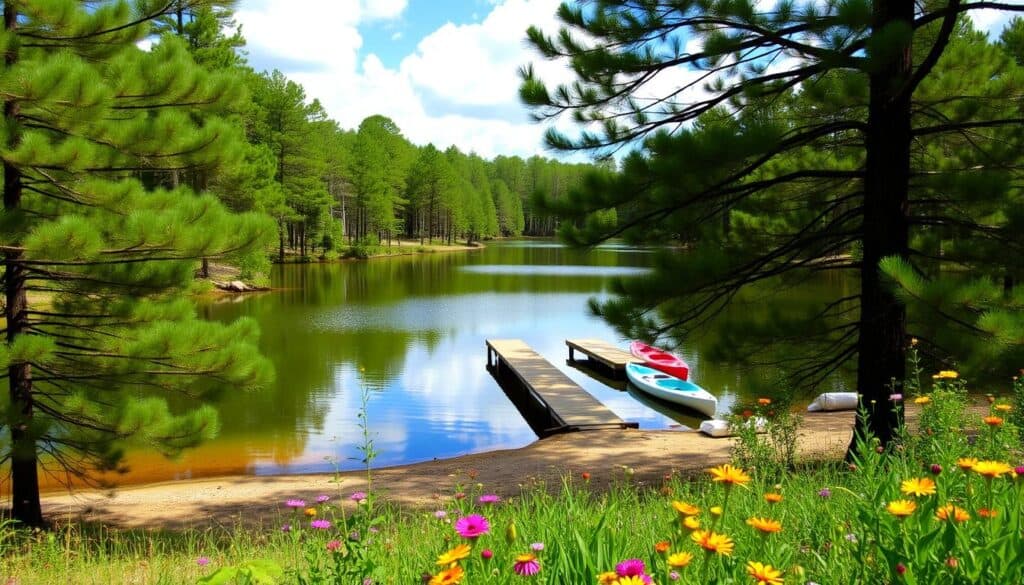
Some additional tips to keep in mind when planning your visit include:
- Arrive early to secure parking and avoid crowds
- Bring a map or guide to help navigate the park’s trails and facilities
- Respect the park’s rules and regulations to help preserve the natural environment
By following these tips and being mindful of the park’s unique features and regulations, you can have a safe and enjoyable visit to Camp Helen State Park and make the most of your outdoor recreation experience in this beautiful nature reserve, even if camping grounds are not available.
Safety and Conservation Efforts
Camp Helen State Park is committed to safety and conservation, with a range of efforts in place to protect its natural and cultural resources. The park has a range of rules and regulations, including restrictions on camping, fishing, and wildlife viewing, to help minimize the impact of visitors on the park’s ecosystem.
Visitors can enjoy bird watching and outdoor recreation while respecting the park’s nature reserves. To ensure a safe and enjoyable experience, it is essential to follow the park’s rules and regulations, which include:
- Respecting wildlife and their habitats
- Staying on designated trails
- Not littering or polluting the environment
By following these guidelines, visitors can help preserve the park’s natural beauty and ensure a safe and enjoyable experience for themselves and others. 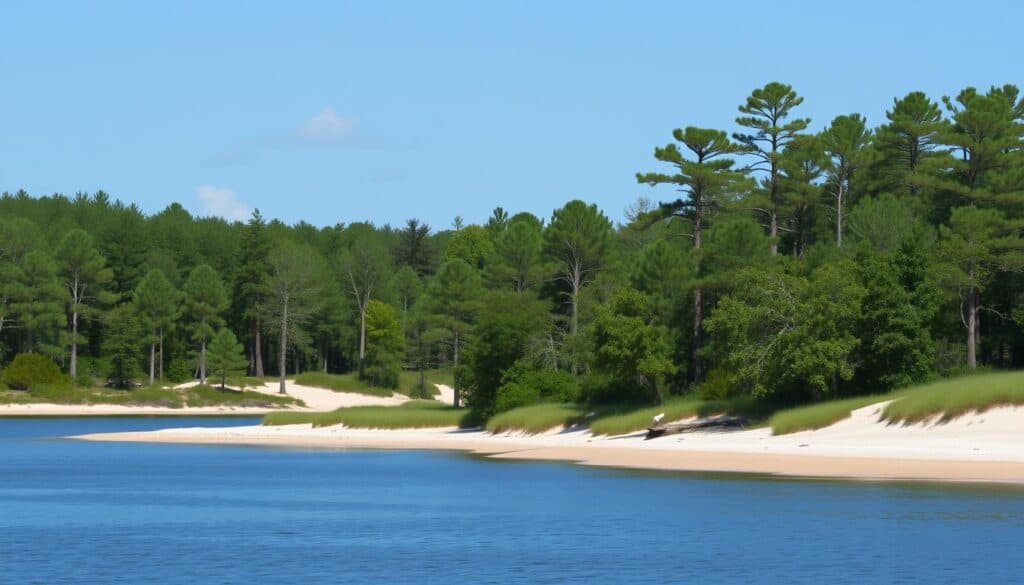
| Conservation Efforts | Goals |
|---|---|
| Protecting wildlife habitats | Promote biodiversity and ecosystem health |
| Reducing waste and pollution | Preserve the park’s natural beauty and resources |
| Educating visitors | Promote awareness and respect for the park’s natural and cultural resources |
Visitor Testimonials and Experiences
Visitors to Camp Helen State Park have praised its natural beauty, scenic landscapes, and range of outdoor activities, with many returning year after year. The park’s coastal habitats provide a unique setting for outdoor recreation, including hiking, kayaking, and birdwatching. With its range of amenities and services, including picnic areas and restrooms, Camp Helen State Park is the perfect spot for a family vacation or romantic getaway.
Some of the activities that visitors can enjoy at the park include:
- Birdwatching: with over 100 species of birds documented in the park
- Kayaking: through the park’s coastal habitats and into Lake Powell
- Hiking: on the park’s many trails, including the camping grounds trail
Visitors have also reported sightings of wildlife, including deer, osprey, and bald eagles. The park’s unique location, bordered by water on nearly all four sides, makes it an ideal spot for outdoor recreation and nature lovers.
Overall, Camp Helen State Park is a must-visit destination for anyone looking to connect with nature and enjoy the great outdoors. With its beautiful coastal habitats, range of outdoor activities, and friendly staff, the park is sure to provide a memorable experience for visitors of all ages.
| Activity | Location | Difficulty Level |
|---|---|---|
| Birdwatching | Throughout the park | Easy |
| Kayaking | Lake Powell and coastal habitats | Medium |
| Hiking | Various trails throughout the park | Medium to Hard |
Final Thoughts: Why You Should Visit
As you prepare to embark on your journey to Camp Helen State Park, let the allure of its natural wonders captivate your senses. This Florida state park is a true gem, offering a serene escape where you can immerse yourself in the beauty of the hiking trails and nature reserves. Whether you’re seeking a rejuvenating hike, a tranquil kayak adventure, or simply a chance to reconnect with the great outdoors, Camp Helen has it all.
Surround yourself with the park’s breathtaking coastal landscapes, where the gentle waves of the Gulf of Mexico meet the freshwater of Lake Powell, creating a unique and enchanting ecosystem. Witness the vibrant flora and fauna that thrive in this natural haven, and let the soothing sounds of the wind and waves provide a soundtrack to your getaway.
As you explore the park, make lasting memories with your loved ones. Craft cherished moments by picnicking under the shady canopy of live oaks, participating in educational programs, or simply taking in the serenity of your surroundings. Camp Helen is a place where nature and community intertwine, offering a truly immersive experience that will leave a lasting impression on your heart.
So, why wait? Start planning your visit to Camp Helen State Park today and unlock the treasures that this hidden gem has to offer. Embrace the opportunity to reconnect with the great outdoors and create unforgettable memories that will stay with you long after you’ve returned home.
FAQ
What are the main features and attractions of Camp Helen State Park?
Camp Helen State Park is known for its stunning coastal landscapes, diverse flora and fauna, scenic hiking trails, and abundant wildlife. The park offers a range of outdoor activities, including hiking, kayaking, and birdwatching.
What is the history of Camp Helen State Park?
The park has a rich history, dating back to the early 1900s when it was known as Camp Helen Girls’ School. It later served as a vacation destination for wealthy families and a military training camp during World War II.
What types of outdoor activities can visitors enjoy at Camp Helen State Park?
The park offers a wide range of outdoor activities, such as hiking, kayaking, paddleboarding, birdwatching, and fishing. The hiking trails cater to various skill levels, providing scenic views of the Gulf of Mexico and Lake Powell.
Is Camp Helen State Park family-friendly?
Yes, Camp Helen State Park is an excellent destination for families, with educational programs, interactive events, picnic areas, and amenities that cater to all ages.
When is the best time to visit Camp Helen State Park?
The park is open daily from 8:00 AM until sunset, and the best time to visit depends on your interests and the time of year. The park hosts various seasonal events and festivals throughout the year.
What are the nearby attractions and activities around Camp Helen State Park?
Camp Helen State Park is located near Panama City Beach, which offers stunning beaches, water sports, and vibrant nightlife. Visitors can also explore the historic Camp Helen community and enjoy a range of local dining options.
What should visitors know about planning their visit to Camp Helen State Park?
Visitors should bring essentials like water, sunscreen, and a picnic lunch, and check the park’s entrance fees and parking options before arriving. It’s also important to be aware of the park’s rules and regulations to help preserve its natural beauty.

